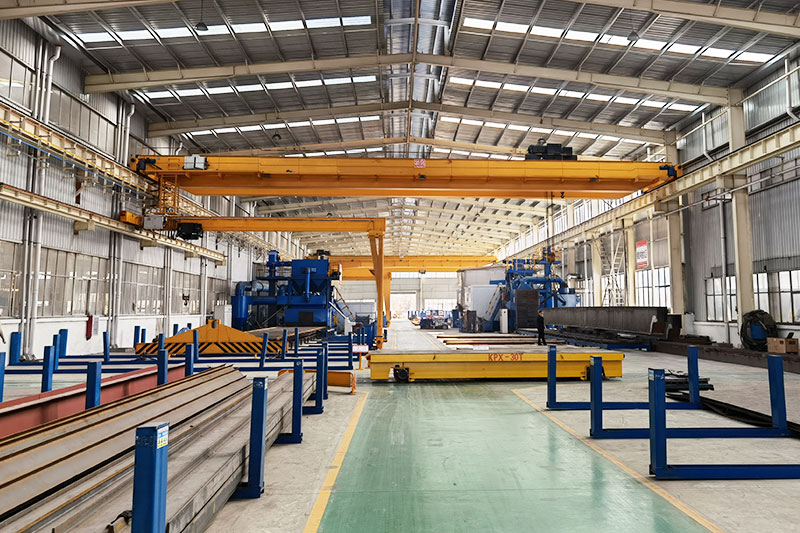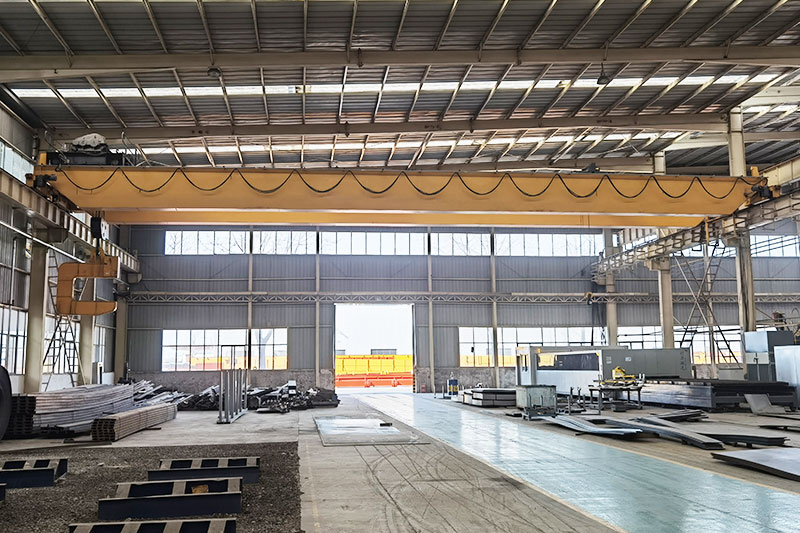Purchasing a 40-ton overhead crane is a significant investment, and negotiating a competitive price is crucial for ensuring that you get value for your money. Overhead cranes are indispensable tools in industries such as manufacturing, construction, and logistics, making it essential to balance quality, price, and service when choosing a supplier. In this article, we will discuss key strategies for negotiating a competitive price with your 40 ton overhead crane supplier, ensuring you secure the best deal without compromising on quality or long-term support.

Understanding Your Needs
Before you even start negotiating with a crane supplier, it’s vital to fully understand your needs and the specifications of the crane required for your operations. The 40-ton capacity overhead crane is a versatile piece of equipment used for heavy-duty lifting, and different suppliers may offer various models and configurations suited for different industries or applications. To negotiate effectively, make sure you are clear on:
-
Application Requirements: Is the crane needed for continuous operation, or will it be used intermittently? Will it need to lift specific loads or work in specific environmental conditions (e.g., high temperatures, hazardous environments)?
-
Crane Features: Do you need additional features such as remote control, custom lifting hooks, or specialized safety features? Clarifying these features will give you a more accurate basis for comparing prices.
-
Space Constraints: Is there a fixed area where the crane will operate? Dimensions such as span and lifting height will influence the crane’s design and cost.
-
Operational Duty Class: The expected workload, such as the number of hours the crane will operate daily, impacts its durability and required specifications.
Understanding these specifics will not only help you identify the most suitable crane model but also give you a better understanding of the supplier’s pricing structure, allowing for more effective negotiations.
Researching Crane Suppliers and Their Offerings
The next step in negotiating a competitive price is conducting thorough research on potential suppliers. Not all crane manufacturers or suppliers are the same, and their pricing can vary based on factors like quality, technology, and after-sales services. Here’s how to research effectively:
-
Supplier Reputation: Look for well-established suppliers with a proven track record of providing high-quality cranes. A reputable overhead crane supplier is more likely to offer better customer support and high-performance equipment, which can be a valuable long-term investment.
-
Product Reviews and Case Studies: Check customer reviews, testimonials, and case studies from other businesses who have purchased 40-ton overhead cranes. This will help you understand the performance and reliability of the crane and supplier.
-
Supplier Specialization: Some suppliers may specialize in certain types of cranes, while others may offer a broader range. A specialized supplier may offer more customized options but could come at a higher price point.
-
Quality Certifications: Ensure the supplier has relevant industry certifications (e.g., ISO, CE) to guarantee the crane meets international quality and safety standards.
Having a well-rounded view of the available options allows you to compare different suppliers based on not only price but also the overall value they offer in terms of product quality and after-sales service.

Understanding the Price Breakdown
When discussing price, it’s essential to ask for a detailed breakdown. A 40-ton overhead crane consists of multiple components, and their quality and configuration will impact the overall overhead crane price. Common components to be mindful of include:
-
Crane Structure: The crane’s beams, girders, and trolley systems. High-quality steel construction increases the cost but ensures durability.
-
Electrical Components: Motors, control panels, and wiring. Some suppliers may offer advanced automation features or higher efficiency motors, which can increase costs.
-
Safety Features: Advanced safety mechanisms such as overload protection, anti-sway systems, and emergency stop systems often add to the price.
-
Installation and Commissioning: Some suppliers may include the cost of installation, while others may charge separately.
-
After-Sales Support: Consider the warranty and post-sale services, such as training, spare parts, and maintenance services, which can all affect the overall cost.
By understanding how the price is structured, you can identify areas where there may be room for negotiation, such as reducing the scope of certain features or opting for lower-cost alternatives without compromising on safety or performance.
Comparing Multiple Quotes
Never settle for the first quote you receive. Instead, request quotes from multiple suppliers to get a sense of the market price for the crane you require. Comparing multiple quotes helps you assess whether a particular double girder overhead crane manufacturer or supplier is offering a competitive deal or if you can get a similar product at a better price elsewhere.
When comparing quotes, ensure that they are for the same model and specifications, as minor differences in features can cause significant price variations. Consider both the upfront costs and the long-term value, which includes maintenance, energy efficiency, and warranty coverage.
Negotiating Terms and Conditions
Once you’ve narrowed down your options, the next step is to negotiate the terms and conditions of the deal. Here are several factors you can negotiate to ensure that you’re getting the best deal:
-
Price Reductions: Depending on the size of your order and the supplier’s flexibility, you may be able to negotiate a discount, especially if you plan to purchase more cranes in the future.
-
Payment Terms: Negotiating favorable payment terms can help you manage cash flow. For example, you might negotiate deferred payments or installment plans.
-
Delivery Time: A longer delivery time might reduce the cost, as suppliers can plan for more efficient shipping or manufacturing schedules. However, if your project requires quicker delivery, suppliers may offer expedited services at a higher price.
-
After-Sales Services: Suppliers often include after-sales services such as training, maintenance, and spare parts. Ensure that you understand what’s included in the price and negotiate for additional support if necessary.
-
Warranty: Ensure the warranty offered by the supplier covers both parts and labor for a reasonable period, and clarify the terms regarding repairs or replacements.
Negotiating these terms can help you secure a better overall deal beyond just the purchase price.
Leverage Volume or Long-Term Relationship
If you’re planning to buy more than one crane or intend to form a long-term relationship with the supplier, make sure to leverage this during negotiations. Suppliers may offer discounts or more favorable terms for larger purchases or future business.
For example, you could negotiate a price reduction for a larger order, request free or discounted installation services, or even receive a more extended warranty for committing to future purchases or maintenance contracts.
Final Steps and Agreement
Once you’ve negotiated the price and terms, it’s important to carefully review the final agreement. Make sure that all aspects of the deal, including price, delivery time, payment terms, warranty, and after-sales service, are clearly stated in the contract. Both parties should fully understand the expectations, and any ambiguities or areas of concern should be addressed before signing the contract.
It’s also wise to establish a clear line of communication with the supplier, so that you can quickly address any issues that arise during the purchasing process or after the crane has been installed.
Conclusion
Negotiating a competitive price with your 40-ton overhead crane supplier requires careful preparation, research, and strategic negotiation. By understanding your requirements, comparing multiple suppliers, asking for a price breakdown, and negotiating key terms, you can secure a deal that offers the best value for your business.
Ultimately, remember that the cheapest option is not always the best. Quality, safety, and after-sales support are equally important in ensuring that your overhead crane serves its purpose for many years to come. By investing time in negotiations, you can achieve a balanced deal that meets both your budget and operational needs.